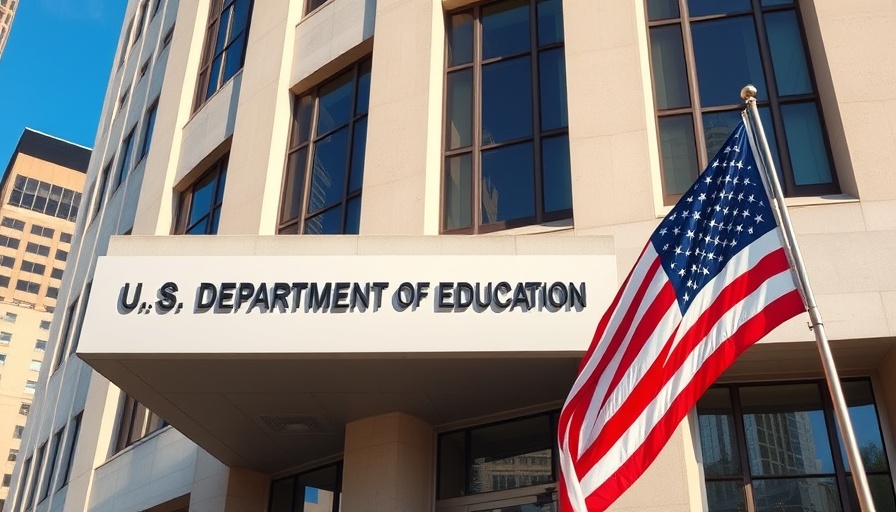
Understanding the Return of Student Loan Payments and What It Means for You
As of May 5, 2025, the Department of Education is set to restart collections on student loan debt after a five-year hiatus due to the COVID-19 pandemic. This shift impacts approximately 5.3 million borrowers who had defaulted prior to this pause. It's crucial for these individuals to prepare for potential impacts such as wage garnishments or tax refund withholdings—a prospect that may seem daunting but can be managed with proper planning.
Who Is Affected by the Collection Resumption?
The return to collections primarily targets those already in default—characterized as failing to make loan payments for at least 270 days. If you’re unsure of your status, visit studentaid.gov. This portal is your best resource; you can check your total debt, loan servicers, and payment obligations. If you find yourself in default, don’t worry—it’s not the end of the world; there are options to help you regain control.
Options for Managing Defaulted Loans
If you discover you are in default, consider the following options:
- Full Repayment: Although it’s the quickest remedy, most borrowers find this impractical due to financial constraints. Still, it’s worth contemplating if your situation allows it.
- Loan Consolidation: This combines your existing loans into a new Direct Consolidation Loan. While it simplifies payments and can lower monthly bills, it often extends your repayment period, resulting in higher total interest costs.
- Loan Rehabilitation: This process can remove the default status from your credit history by requiring a series of on-time payments—usually around nine. The exact amount is income-based, making it a tailored solution for many borrowers.
Choosing the Right Repayment Plan
Once you are out of default or your status is secure, exploring repayment plans is your next step. Start by assessing how much you’re expected to pay. On studentaid.gov, use the “My Aid” section to view your loan breakdown. Different plans exist—like income-driven repayment—or standard plans. Knowing your options can empower you to make informed choices that fit your financial situation.
Future Considerations for Student Loan Borrowers
The landscape of student loan repayment continues to evolve. With economic changes and policy shifts, the experience for borrowers is shifting. Some borrowers may face uncertainties as interest rates and repayment terms fluctuate. Therefore, actively engaging with changes in student loan policy and understanding your options will arm you with critical knowledge.
Practical Tips for Managing Your Student Loans
To tackle student loans effectively:
- Budget Wisely: Create a detailed monthly budget accounting for your loan payments, ensuring that other financial goals are also considered.
- Use Loan Calculators: Various online tools can help you simulate different repayment scenarios to see what might work best for your budget.
- Stay Informed: Follow reliable resources or sign up for updates related to student loans to stay ahead of any changes that may impact your obligations.
Act Now to Take Charge of Your Student Loans
Being proactive in managing your student loans now can alleviate future stress. Whether you’re considering options to avoid default or strategizing how to repay, understanding your loans will empower you as a borrower. Make the most of available resources, talk to financial advisors, and keep your financial future on track.
Your Next Steps
The return of collections is a pivotal moment for millions of borrowers. Understanding your options and knowing how to navigate this change can make all the difference. Log in to studentaid.gov today to review your loans, seek assistance if needed, and solidify a repayment strategy that works for you.
 Add Row
Add Row  Add
Add 




Write A Comment